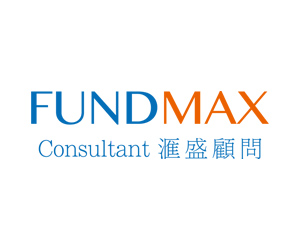Want to be in the loop?
subscribe to
our notification
Business News
VIETNAM’S GDP GROWTH OF 7.08: ECONOMIC MOMENTUM FOR 2019 - 2020
According to the General Statistics Office (GSO), the Vietnam’s GDP expanded 7.08 per cent in 2018, the highest increase since 2008. Meanwhile inflation was capped at only 3.54 per cent, lower than the target of 4 per cent as assigned by the Vietnam National Assembly.
Vietnam is estimated to earn US$244.72 billion from export while spending US$237.51 billion on import. Thus, the country has trade surplus of about US$7.2 billion, the highest increase ever. The agriculture, forestry and fishery sector recorded the highest growth rate in the period of 2012-2018. In particular, the agricultural sector continued to recover, with an increase of 2.89 per cent, the highest growth in the period 2012-2018. These impressive achievements will be the driving force for economic growth in the period of 2019 - 2020.
Economic growth is on the rebound
The main driver of economic growth comes from the manufacturing sector, with high contribution of industries of processing and manufacturing; production and distribution of electricity, gas, hot water and air conditioning; construction; and management and treatment of wastewater and waste. However, the performance of mining industry is declining.
The share of the agricultural sector in the structure of the economy is declining and shifting to the service sector. According to the statistics in the period 2013 - 2018, the proportion of the agriculture, forestry and fisheries sector decreases from 18 per cent to 14 per cent; industry and construction increases from 33 per cent to 34 per cent; and services from 39 per cent in 2013 increase to 42 per cent in 2018.
The FDI sector increases contribution to GDP while the contribution of the domestic sector decreases. In 2013, the State economic sector contributed 29 per cent to GDP and decreased to 28 per cent in 2018; FDI sector from 17 per cent in 2013 increased to 20 per cent in 2018; and the non-state economic sector contributed 44 per cent in 2013 to 42 per cent in 2018.
That success is also attributed to the State Bank in managing exchange rates. The central bank has adopted a flexible and prudent monetary policy, supporting the maintenance of macroeconomic stability, thereby helping stabilise interest rates. Controlled inflation and exchange rates are a premise for macro stability and growth.
Potential risks remain
According to the General Statistics Office (GSO), the quality of economic growth has improved. In 2018, the contribution of total factor productivity (TFP) to GDP growth reached 43.5 per cent, making its average contribution of 2016-2018 period reach 43.3 per cent, much higher than the average of 33.6 per cent of the period 2011-2015.
However, the economic growth also depends on credit, as analysed by the National Centre for Information and Socio-Economic Forecast (NCIF). The incremental capital output ratio (ICOR) remains limited; and the labour productivity has not improved much.
At the same time, the increase in imports from China will have a negative impact on businesses. Although they can take advantage of cheap raw materials, they tend to invest less in science and technology and innovation. If businesses keep utilising old equipment, the competitiveness of goods will be very low in the Industrial Revolution 4.0.
On the other hand, processing and manufacturing industries depend on foreign investment sector. The latest figures show that FDI tends to flow in processing, manufacturing and real estate industries. The total investment in processing and manufacturing industry reaches US$10,756.28 million, US$5,902.876 million in real estate, and US$1,321.041 million in manufacturing and distribution of electricity, gas, water, air conditioning. The risk to Vietnam’s economy comes from increasing economic dependence on FDI, as the contribution of FDI to the economy is expanding, while the domestic sector contribution is decreasing.
In terms of finance, prolonged high growth of credit and money supply also pose many potential risks of national debt and macroeconomic instability. Besides, the national financial openness is higher than the level of the economic development, not to mention the high public debt ratio and big debt repayment obligation.
Public debt tends to decrease but non-domestic debt increases rapidly. From the high rate in 2016 with public debt equal to 64.72 per cent of GDP, it was stable at 61.4 per cent in 2017 and 2018; Non-national debt accounted for 45.5 per cent of GDP in 2016, increased to 48.9 per cent in 2017 and 49.9 per cent in 2018. The direct repayment obligation of the Government is high compared to State budget revenue and is expected to continue to increase in the near future, with an estimate of 2018 of 20.6 per cent of GDP compared to 19.5 per cent in 2017. Ease of doing business has improved, but not uniformly.
Economic growth scenarios for 2019
Global economic growth is forecast to slow in the coming years for several reasons, including: fluctuating international commodity prices; tightening monetary policy of some big countries, especially the United States; and rising trade protection policies. With the US-China trade war showing no signs of stopping yet, the main drivers for economic growth in this period that were determined by NCIF include: development and growth of the private sector; institutional reform and business environment; development of science and technology and labour productivity.
NCIF pointed out internal advantages for economic growth including: Trade is promoted through implementation and participation in trade agreements; the process of economic restructuring and business environment improvement are enhanced; the trend of foreign investment is shifted from China; the consumption is increased due to increasing middle class.
The great pressure on economic growth in 2019-2020 comes from the economy and also from the global economy and trade due to deep integration with the world economy. The report of the International Monetary Fund (IMF) announced in October showed that in 2018 global GDP increases 2.9 per cent, only 2.5 per cent in 2019 and may be lower if the US-China trade war continues to escalate.
In this context, the NCIF predicts two scenarios of Vietnam’s economic growth in 2019-2020. It includes basic scenario and high scenario. In the basic scenario, Vietnam’s GDP is projected to increase 6.84 per cent under the condition: World economic growth will reach 3.6 per cent in 2019 and 3.4 per cent in 2020; the World CPI will reach 4.69 per cent in 2019; 4.31 per cent in 2020; the oil price will reach US$67.6/barrel in 2019 and US$70.05/barrel in 2020; the investment rates for 2019 and 2020 are 32 per cent of GDP; the growth rate of the labour force will 1.21 per cent in 2019; 1.2 per cent in 2020; volatility of the average exchange rate per year will reach less than 3 per cent in 2019 and 2 per cent in 2020; volatility of average lending rate will reach 1.5 to 2 per cent in 2019 and 1 to 1.5 per cent in 2020; the credit growth will reach 16.5 per cent in 2019; and 17 per cent in 2020; public debt in 2019 and 2020 will reach 63 per cent.
For the high scenario, Vietnam’s GDP will reach 7.02 per cent under the condition: World economic growth will reach 3.64 per cent in 2019 and 3.48 per cent in 2020; World CPI will reach 4.69 in 2019 and 4.31 per cent in 2020; oil price will reach US$67.6 /barrel in 2019 and US$70.05 /barrel in 2020; the ratio of 2019 and 2020 investment rates will all reach 33 per cent of GDP; The growth rate of the labour force will reach 1.21 per cent in 2019 and 1.2 per cent in 2020; volatility of the average exchange rate per year will reach 2 - 2.5 per cent in 2019 and 2 per cent in 2020; volatility of average lending rates for 2019 and 2020 will be 1.5 per cent; credit growth will reach 16.5 per cent in 2019 and 17 per cent in 2020; public debt in 2019 and 2020 will be 61 per cent.
Many big movements affecting Vietnam's economy, Mr. Tran Toan Thang, Head of World Economic Affairs, NCIF
The complicated trade movements in the world have been and will be affecting Vietnam’s economy, as the US trade deficit continues to increase, the flow of FDI from China is not clear. The US scenario of taxing up to US$200 billion of goods imported from China is expected to reduce GDP by 0.10 per cent in 2018, 0.33 per cent in 2019 and 0.40 per cent in 2020. This level of impact will gradually decrease and end in 2028. In particular, the export of goods and services will be reduced by 0.13 per cent in 2018. In 2019, it will be decreased by 0.61 per cent and 0.89 per cent by 2020 and the effect continued until 2032.
As forecast, the CPTPP implementation will increase Vietnam’s GDP by 1.32 per cent after tariff cuts and by 2.01 per cent after tariff cuts and liberalised services. Correspondingly, export will increase by 4.04 per cent and 4.74 per cent, import increases by 3.8 per cent and 4.64 per cent respectively. GDP will increase by US$1.7 billion, export will increase US$4.09 billion and import will increase US$4.93 billion.
Flexibility in macroeconomic policy making needed
Mr. Truong Van Phuoc, Acting Chairman of the National Financial Supervisory Commission
Vietnam's challenge mingles in the challenge of the world economy, as the country has deeply integrated into the world economy. The most worrying point of the whole world today is that trade war is always two-sided. The US-China trade war will immediately affect Vietnam's trade volume, which will decrease from 5.2 per cent in 2017 to 4.2 per cent in 2018. Forecasts show that Vietnam's trade volume in 2019 will continue to decline to about 4 per cent.
Vietnam’s economy is open and the economic growth depends heavily on exports. If the scale of global trade falls, the country's exports will be difficult. Those are challenges, the biggest challenges are how flexible and adaptive we are from the perspective of macro-economic policies and tap into the potential of the economy. What we said earlier is the flexibility in macro-economic policies making to adapt to the current global conditions.
Identifying the right support for SMEs, Ms. Pham Chi Lan, Economic expert
From 2019, Vietnam must fully implement its international commitments, especially those on market opening, tax cuts, and intellectual property, providing opportunities to attract resources from abroad and placing significant pressure on the domestic economic sector. Meanwhile, the level of technology change of domestic enterprises is weak and depends too much on loans. In particular, Vietnam's small businesses are weakening.
If we are determined to support the development of the private sector, the main subjects must be 98 per cent of domestic small and medium enterprises, household economic sector, that are ready to adapt to the requirements of industrial revolution 4.0 and the international integration. Resolution 19 has been implemented for five years but business conditions are still in question. In the next two years, it is necessary to focus on implementing Resolution 35/NQ-CP on supporting and developing enterprises until 2020, because this is a full commitment of the Government and remove bureaucratic procedures.
Policies for private economic development need to be specific, Mr. Luong Van Khoi, Deputy Director of NCIF
We talk more about innovation, promoting the private economy, but new policies are mentioned in a general way. Most of Vietnam's current industries are led by FDI, the manufacturing and processing industry are all covered by FDI enterprises as up to 70 per cent of the export value belongs to them. Therefore, the more free trade agreements (FTAs), the more favourable the FDI sector is.
In this context, to help the private sector develop and improve labour productivity, we need to select and support the companies with a relatively large scale of development.
The experience of countries such as Korea, Japan, and China shows that the initial support policy of the State is very important to have strong private economic groups. When this group is strong enough, they have enough capital, they will buy the most modern technology and create value chains to develop. Therefore, supporting businesses to develop will help form linkages with domestic businesses. For each specific field, in addition to the awakening of the business, the State should consider providing specific policy supports for the businesses in the context of the Industrial Revolution 4.0.
Source: VCCI
Related News

ESG SERIES MASTERCLASS
Join the ESG Series Masterclass today and be a part of the solution led by our team of industry experts Bao Nguyen, Betty Pallard, Chi Nguyen, Jonathan SOURINTHA - HRK Group - PVA PRO - GPS (iBAG), Markus Klemmer, Paula Fajardo, Sergio Pereira da Silva along with many more to come…

VIETNAM’S GDP TO GROW 5.5% THIS YEAR – WB
This forecast is based on the assumption of a moderate recovery in manufacturing exports in 2024, fueled by rebound growth of 8.5% year-on-year in the fourth quarter of 2023 and 17.2% year-on-year in the first quarter of 2024, reflecting strengthening global demand, said Dorsati Madani, senior country economist at the WB in Vietnam.

FARE REFUND FOR VISA REJECTION
Cathay Pacific will offer full refunds for cases of visa rejection to provide you with the confidence to explore the world with ease. If you are planning to fly to a destination that requires an entry visa, you can now book with greater peace of mind.

MOIT PROPOSES SCHEME TO BOOST RENEWABLE ENERGY PROCUREMENT
The proposed Direct Power Purchase Agreement (DDPA) mechanism, outlined in the draft decree, targets organisations and individuals consuming electricity from the 22kV power grid or higher, with a monthly consumption averaging 500,000kWh. However, residential households are excluded from direct procurement.

REAL ESTATE BONDS PLACE PRESSURE ON ISSUING FIRMS
The ministry’s recent report underscores concerns within Vietnam’s corporate bond market for 2023 and 2024. It emphasizes the critical need to address hindrances to the real estate sector in line with the objectives provided in Government Resolution No. 33/NQ-CP, which aims to stabilize the industry.

FOUR COMMODITIES POST Q1 EXPORT VALUE OF OVER 5 BILLION USD
The total export turnover of agricultural, forestry, and fisheries products in the first three months of 2024 is estimated to reach 13.53 billion USD, an increase of 21.8% compared to the same period of 2023.

































